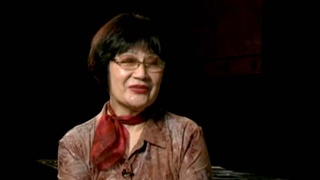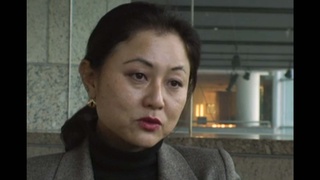Interviews
The various realities of Nikkei in Latin America (Spanish)
(Spanish) I think that the development of this thing called Nikkei has been somewhat distinct from country to country. I’m referring to Latin America in general. Through the Pan-American Association of Nikkei, I’ve had the opportunity to come into contact with various Nikkei realities, and yes, there are some common roots, however there are also certain differences. Perhaps the greatest difference I see comes from the number of Japanese that settled in a given place. In places where there are a lot of Japanese, there are obviously Japanese schools. There are Japanese clubs, Japanese churches, or Buddhist temples – whatever, I don’t know! By contrast, in countries like Chile, there was none of that. Therefore, in the development of countries where there were a lot of Japanese, maybe the customs, the culture lasted longer. Maybe it wasn’t growing, but it lasted longer in those places. In the case of Chile, in my case, I think we drifted quite a bit towards adapting to Chilean society, and as fast as possible in order to get by as best we could. So, for example, within this context you see that in religion, for example, in Chile there’s no…uh…the majority religion is Catholicism, and perhaps therefore all of us ended up embracing that religion. Something else, for example, is that since the nucleus of Japanese and Nikkei was so small, weddings, marriages to locals was much greater than in other places. Naturally, this led to, among other things, a very rapid loss of the language.
Date: October 7, 2005
Location: California, US
Interviewer: Ann Kaneko
Contributed by: Watase Media Arts Center, Japanese American National Museum
Explore More Videos

Decided to leave Japan to Argentina (Spanish)
(1925-2014) La Plata Hochi, Journalist

Tango makes him to stay in Argentina (Spanish)
(1925-2014) La Plata Hochi, Journalist


Decision to settle in Argentina after WWII (Spanish)
(b. 1929) Nisei Argentinean



Going to Brazil to escape debt (Japanese)
(1911-2010) Founder of JACTO group

Relief fund to support Japanese communities (Japanese)
(1900–1996) The mother of Nikkei Brazilian immigration

Role of Assistancia Social dom Jose Gaspar (Japanese)
(1900–1996) The mother of Nikkei Brazilian immigration

Treatment of Japanese Paraguayans during World War II (Spanish)
Nisei Paraguayan, Researcher

Inclusiveness of the first Japanese colony in Paraguay (Spanish)
Nisei Paraguayan, Researcher

Nikkei contributions to Paraguayan agriculture (Spanish)
Nisei Paraguayan, Researcher

Americanized values (Japanese)
Shin-Issei from Gifu. Recently received U.S. citizenship

Traditional Japanese events for Japanese Americans (Japanese)
Shin-Issei from Gifu. Recently received U.S. citizenship

Leaving for the States without telling my parents (Japanese)
Shin-Issei from Gifu. Recently received U.S. citizenship
